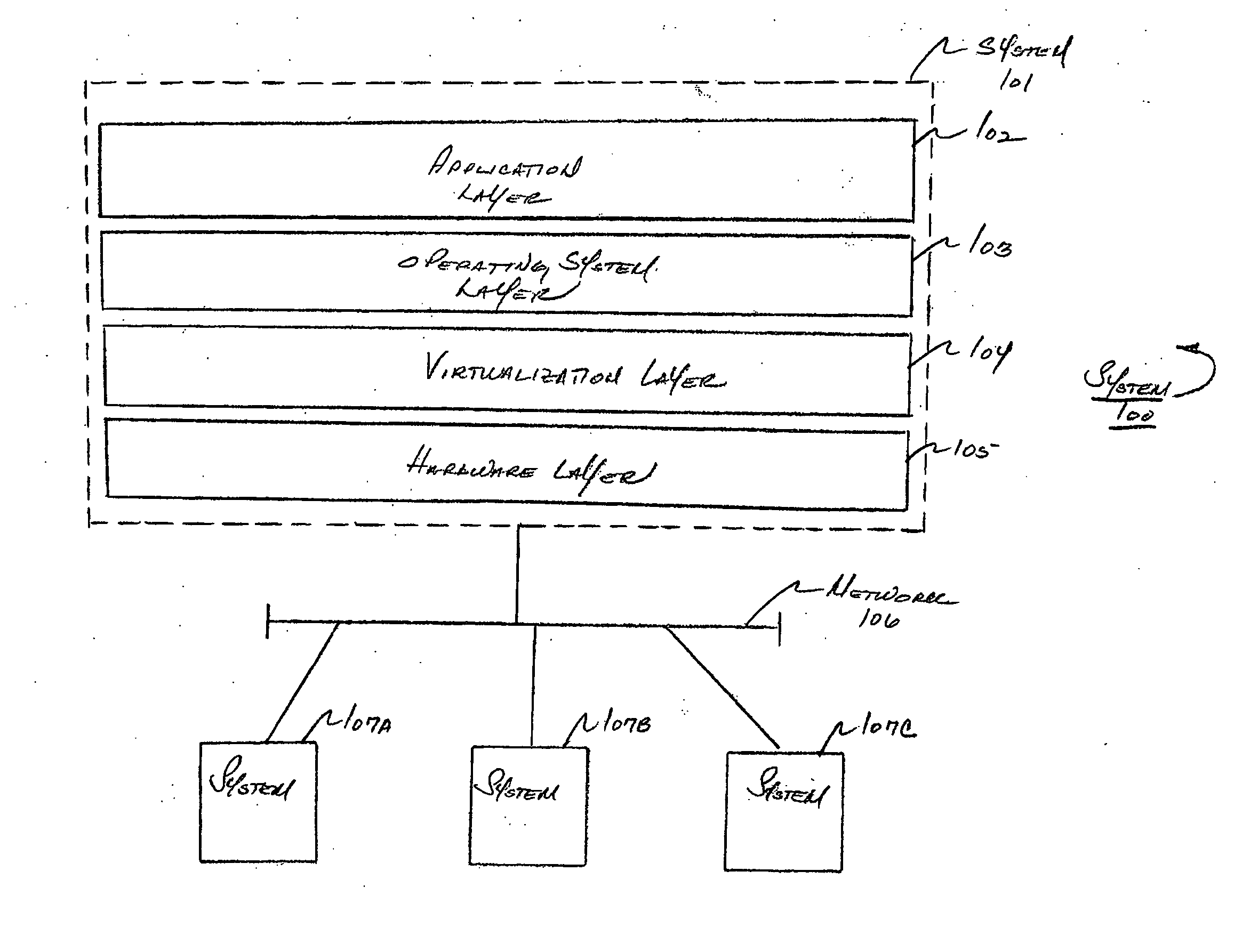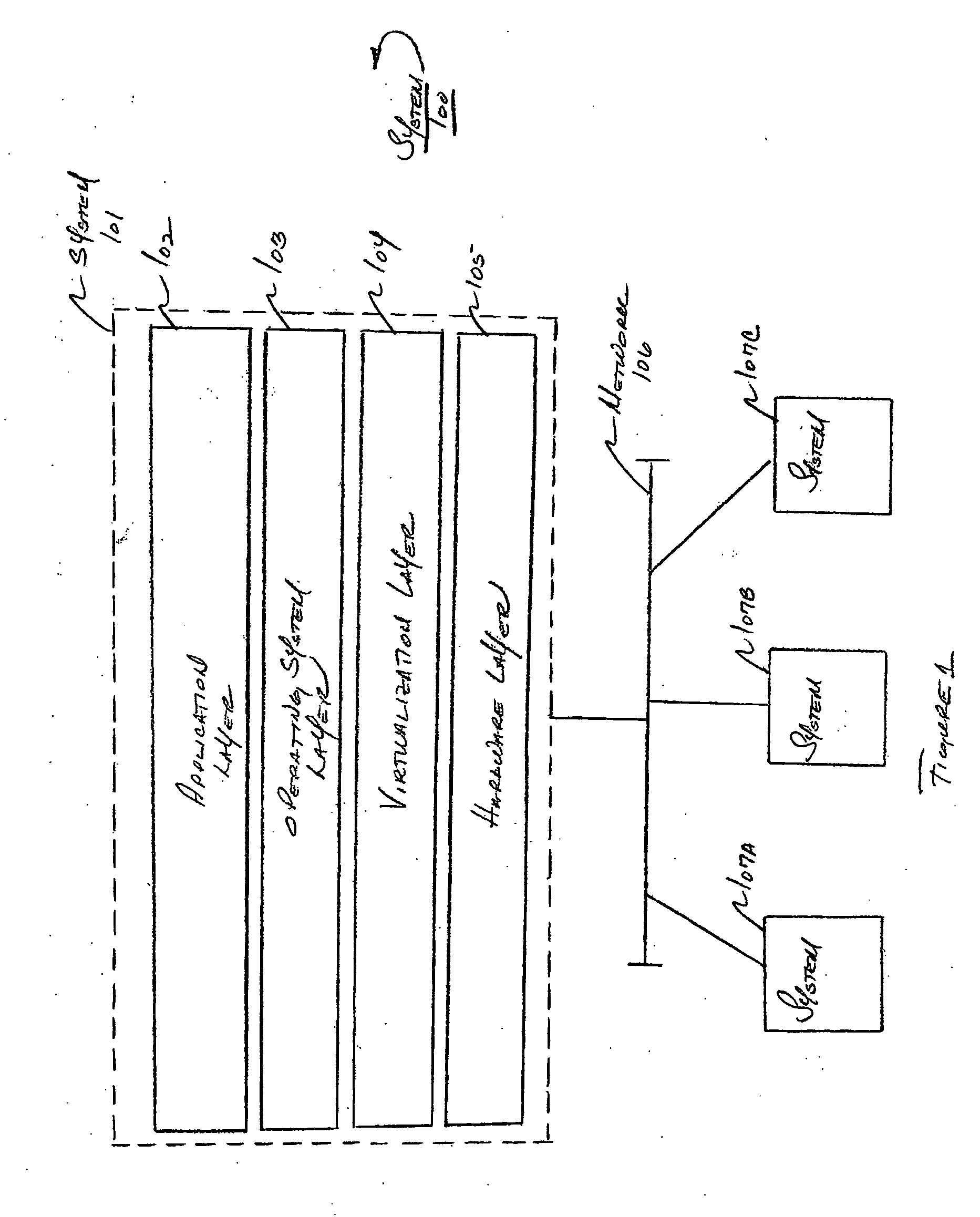Method and apparatus for providing virtual computing services
a virtual computing and service technology, applied in the field of networked computing services, can solve the problems of rampant under-utilization of computing resources, over-provision of each of these types of servers, and environment that does not allow adequate flexibility in response to changing business and customer needs
- Summary
- Abstract
- Description
- Claims
- Application Information
AI Technical Summary
Benefits of technology
Problems solved by technology
Method used
Image
Examples
example i
[0122] Example I / O Function
[0123] The following is an example of an I / O function performed in a virtual server as requested by a GOS (e.g., Linux). The I / O function in the example is initially requested of the Guest Operating System. For instance, a POSIX-compliant library call may invoke a system service that requests an I / O operation.
[0124] The I / O operation passes through a number of layers including, but not limited to: [0125] Common GOS I / O processing. A number of common steps might occur including request aggregation, performance enhancements and other I / O preprocessing functions. The request may be then passed to a first driver level referred to as an “Upper Level” driver. [0126]“Upper Level” drivers that are not in direct hardware contact, but provide support for a particular class of devices. The request is further processed here and passed on to Lower Level drivers. [0127]“Lower Level” drivers are in direct hardware contact. These drivers are specific to a virtual server ...
PUM
 Login to View More
Login to View More Abstract
Description
Claims
Application Information
 Login to View More
Login to View More - R&D
- Intellectual Property
- Life Sciences
- Materials
- Tech Scout
- Unparalleled Data Quality
- Higher Quality Content
- 60% Fewer Hallucinations
Browse by: Latest US Patents, China's latest patents, Technical Efficacy Thesaurus, Application Domain, Technology Topic, Popular Technical Reports.
© 2025 PatSnap. All rights reserved.Legal|Privacy policy|Modern Slavery Act Transparency Statement|Sitemap|About US| Contact US: help@patsnap.com



